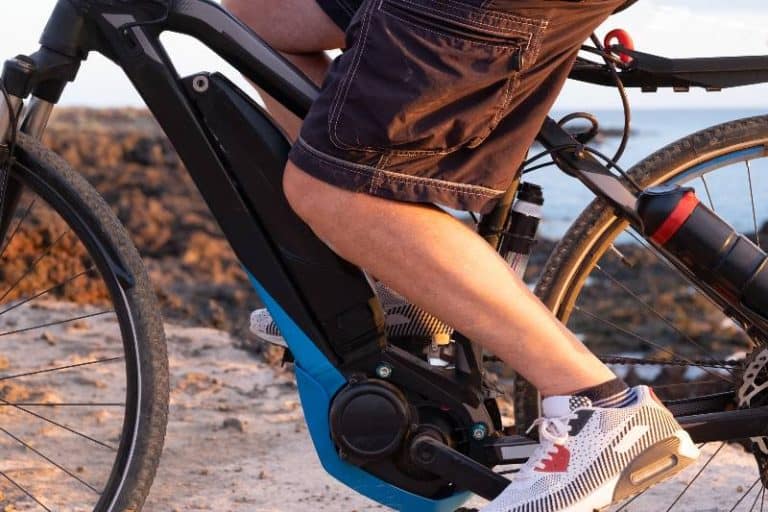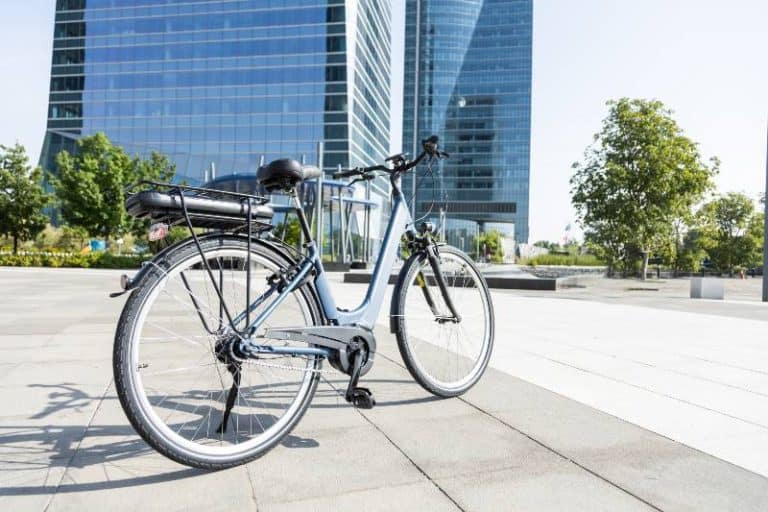Why Ebikes are Winning the Environmental Battle Against Cars
Did you know that electric bikes, or e-bikes, can be one of the most environmentally friendly modes of transportation available? If you’ve been looking for an eco-friendly way to get around but don’t want to give up the convenience of having a car, consider learning more about e-bikes. From reduced emissions and energy costs to their smaller size and lighter weight, switching to an electric bike can have a positive environmental impact. In this blog post we’ll discuss some of the key environmental benefits associated with using e-bikes over cars – making it easier than ever for everyone to live a greener life.
Electric bikes are a great way to reduce emissions and air pollution in an efficient and eco-friendly way. They run solely on electricity, which means they don’t produce any exhaust like cars do.
Key takeaways
- Switching from cars to e-bikes can have a positive impact on the environment by reducing carbon emissions, lowering energy consumption, and minimizing noise pollution. Using e-bikes for short-distance travel and commuting can be a vital step toward combating climate change and enhancing urban surroundings.
- Though there may be initial reservations about the speed, convenience, and e-bike batteries, these can be addressed through education, technological advancements, and infrastructure improvements
- Government incentives and policies that favor bikes, coupled with a commitment to developing electric bicycle-friendly infrastructure, can significantly promote their use. In addition, personal lifestyle changes that embrace more sustainable modes of transportation, like e-bikes, can collectively make a significant impact on our environment.

Ebikes vs Cars: An Environmental Impact Comparison
The Carbon Footprint of Cars
The carbon footprint of a car can vary widely depending on factors such as the type of car, the type of fuel it uses, and the distance it travels. On average, a typical passenger vehicle emits about 4.6 metric tons of carbon dioxide per year, according to the United States Environmental Protection Agency (as of 2021 data).
This figure only considers the carbon emissions from driving. If we factor in the emissions from producing the vehicle and the fuel, as well as those from disposing of the vehicle at the end of its life, the total carbon footprint can be significantly higher. Moreover, it’s worth noting that car manufacturing is an energy-intensive process that also uses large amounts of raw materials, including steel, rubber, glass, plastics, and precious metals.
Cars that run on fossil fuels also produce other types of pollutants, such as particulate matter and nitrogen oxides, which contribute to air pollution and can have negative health impacts.
The Carbon Footprint of E-Bikes
E-bikes, or electric bicycles, have a much smaller carbon footprint compared to cars. This is primarily because they are smaller, lighter, and require less energy to move. Also, since e-bikes run on electricity, they do not emit any direct tailpipe pollutants. If the electricity used to charge the e-bike is generated from renewable sources, the carbon footprint can be further reduced.
The production and disposal of e-bikes do contribute to their overall carbon footprint but to a significantly lesser extent than cars. The manufacturing process of e-bikes also requires raw materials, but the quantities are much smaller. The biggest environmental impact of e-bikes may come from the battery, particularly if it is not properly recycled at the end of its life.
Comparative Analysis
When comparing the environmental impact of e-bikes and cars, e-bikes come out ahead in almost all respects. They use less energy, emit fewer greenhouse gases and pollutants, and require fewer raw materials to produce.
The use phase (driving or riding) is where the biggest difference lies. For cars, the use phase can represent as much as 80% of the vehicle’s total greenhouse gas emissions, while for e-bikes, the use phase represents a much smaller portion of the total emissions.
Moreover, e-bikes can play a significant role in reducing congestion in urban areas, which can lead to a decrease in idling emissions from cars. Also, the smaller size of e-bikes means that less space is required for roads and parking, which can help reduce the environmental impact of urban development.
However, the environmental benefits of e-bikes can be negated if the electricity they use is generated from coal or other non-renewable sources. Therefore, the benefits of e-bikes are greatest in areas where the electricity grid is powered by renewable energy sources.
In conclusion, e-bikes are generally more environmentally friendly than cars. They represent an effective way to reduce personal carbon emissions, particularly for short to medium-distance urban travel. However, a shift towards renewable energy is crucial to maximizing their environmental benefits.
Detailed Environmental Benefits of Ebikes
Reduction in Emissions
The primary environmental benefit of e-bikes is their ability to reduce greenhouse gas emissions. E-bikes produce zero tailpipe emissions, meaning they don’t contribute to local air pollution while they’re being used.
Indirect emissions from e-bikes come from the electricity used to charge them. However, these emissions are still significantly less than those of gasoline-powered cars, even in areas where the electricity is generated mainly from fossil fuels. Moreover, as more and more electricity comes from renewable sources, these emissions will decrease further.
Noise Pollution Control
Noise pollution is a significant issue in many urban areas, contributing to stress and other health problems. E-bikes produce very little noise, certainly much less than cars and motorcycles. This makes them a great choice for reducing noise pollution in cities, contributing to quieter, more peaceful urban environments.
Lower Energy Consumption
E-bikes are very energy-efficient. They use less energy per mile than any other form of motorized transportation. This is partly because they’re lighter and smaller than cars, so they require less energy to move. Furthermore, their electric motors are highly efficient, converting most of the electricity into motion with very little waste heat.
Lower energy consumption means fewer fossil fuels need to be burned, leading to a reduction in overall greenhouse gas emissions.
Reduced Congestion and Urbanization Impact
E-bikes can contribute significantly to reducing traffic congestion. They’re small and maneuverable, meaning they can move through traffic more easily than cars. This can reduce the time spent idling in traffic, which is a major source of emissions.
In terms of urbanization impact, the use of e-bikes requires less infrastructure than cars. They require less space for parking and can often make use of existing bike lanes. This means less land needs to be turned over to roads and parking lots, reducing the environmental impact of urban development.
Furthermore, the rise in e-bikes could contribute to a shift in urban planning, favoring more compact, bike-friendly cities over sprawling car-centric ones. This would have additional environmental benefits, including a reduction in the distance people need to travel and, therefore, the amount of energy they use.
In summary, e-bikes offer a range of environmental benefits, including reduced emissions, noise pollution control, lower energy consumption, and less congestion. They represent a promising solution for reducing the environmental impact of transportation, particularly in urban areas.
Potential Barriers and Misconceptions About Ebikes
Range Anxiety
Just as with electric cars, one common barrier to adopting e-bikes is range anxiety – the fear that the bike’s battery will run out before reaching the destination. However, the reality is that the range of modern e-bikes is more than sufficient for most urban trips.
Typical e-bikes can cover between 20-50 miles on a single charge, and some higher-end models can go even further. Moreover, if the battery does run out, an e-bike can still be pedaled just like a regular bike, so you’ll never be stranded.
Speed and Convenience
There’s a misconception that e-bikes are slower and less convenient than cars or motorbikes. While it’s true that cars can go faster on open roads, in congested city traffic, an e-bike can often get you to your destination quicker thanks to their ability to bypass traffic jams and their ease of parking. E-bikes can also be a convenient option for multi-modal commutes, such as combining biking with public transit.
Moreover, while e-bikes are slower than cars on open roads, they are typically faster than a conventional bike thanks to their electric assist. This means they can help riders cover longer distances and tackle hilly terrain more easily.
Overcoming These Misconceptions
Overcoming these misconceptions about e-bikes requires a mix of education and experience.
Educating potential e-bike users about the real-world performance and benefits of e-bikes can help address concerns about range and speed. This can be achieved through marketing campaigns, public demonstrations, and opportunities to test-ride e-bikes.
In addition, sharing success stories of e-bike users who’ve integrated these bikes into their daily lives can help dispel misconceptions. Highlighting how e-bikes can contribute to a healthier lifestyle, save time in commuting, and reduce transportation costs, while also being a more environmentally friendly option, can also be effective.
Finally, offering incentives can encourage people to try e-bikes. These could include subsidies or tax breaks for purchasing an e-bike, infrastructure improvements to make cities more bike-friendly, or workplace incentives such as secure bike parking and shower facilities.
In conclusion, while there are barriers and misconceptions to e-bike adoption, they can be overcome with appropriate strategies and efforts. As more people experience the benefits of e-bikes firsthand, their popularity is likely to grow, leading to even greater environmental benefits.
Encouraging the Shift to Ebikes
Government Policies and Incentives
Governments can play a crucial role in promoting e-bike adoption. This could involve offering financial incentives such as subsidies, tax breaks, or grant schemes to make e-bikes more affordable. They could also include e-bikes in any existing incentives for electric vehicles.
Government policies could also aim to discourage car use, especially in urban areas. This could include increasing fuel taxes, introducing congestion charges, or restricting parking in city centers.
Improving Infrastructure for E-Bikes
Improving the infrastructure for e-bikes is another important factor. This could involve creating more dedicated bike lanes, especially in urban areas, to make cycling safer and more enjoyable. Other infrastructure improvements could include secure bike parking facilities and charging stations.
Cities could also be redesigned to be more bike-friendly. This could involve reducing the distance between key destinations, incorporating more green spaces, and ensuring all areas of the city are accessible by bike.
Personal Choices and Lifestyle Changes
Individuals also have a part to play in promoting the shift to e-bikes. This can involve making personal choices such as deciding to commute by e-bike instead of by car, or choosing to live in a location that is accessible by bike.
Promoting a culture of cycling can also help encourage the shift to e-bikes. This could involve education campaigns to highlight the health and environmental benefits of cycling, or community initiatives such as group rides or bike-to-work days.

The Environmental Benefits Of Ebikes Over Cars FAQs
Can e-bikes really consume less energy than cars?
Compared to cars or motorcycles, e-bikes have a low energy usage rate and are efficient at converting energy into electric motor power. This results in a decreased energy requirement per kilometer traveled.
What are common misconceptions about e-bikes?
Common misconceptions about e-bikes include that they are slow, have a short range, and are difficult to use. In reality, modern e-bikes have powerful motors and long ranges so users can travel faster for longer distances.
How can we overcome range anxiety related to bikes?
Range anxiety can be addressed by providing more charging points and infrastructure for e-bikes, as well as increasing the range of modern models. In addition, educating people about the benefits of e-bikes can help dispel misconceptions and encourage more people to take up cycling.
How can government policies encourage the use of e-bikes?
Government policies can be used to encourage the use of e-bikes by offering financial incentives such as subsidies or tax breaks, discouraging car use in urban areas, and improving infrastructure for e-bikes. They can also promote a culture of cycling through education campaigns and community initiatives.
How can improved infrastructure support the shift to e-bikes?
Improved infrastructure for e-bikes can include dedicated bike lanes, secure bike parking facilities, and charging stations. It could also involve redesigning cities to be more bike-friendly with shorter distances between destinations and increased green spaces.
Conclusion
Making a switch from cars to e-bikes can have a plethora of environmental benefits. By reducing carbon emissions and energy consumption, minimizing noise pollution, and creating more livable urban surroundings, e-bikes hold incredible potential to help our environment.
With more education about the speed, convenience, and battery life of e-bikes, and technological advancements as well as infrastructure improvements advancing this mode of transport every day, we can all make a significant impact on the planet.
Together it is possible to fight climate change and ensure that our future generation inherits healthy ecosystems and thriving cities. Take action today – sign up for Electrik Living’s newsletter to learn more about the environmental advantages of e-bikes over cars!






